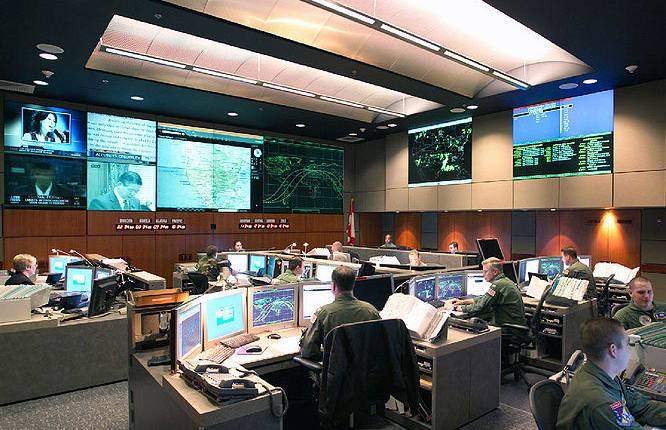What Does Norad Do? The Command tracks Spy Balloons, Russian Jet Fighters & Much More
Among its many jobs, Norad - the North American Aerospace Defense Command - tracks and identifies rogue spy balloons, Russian fighter jets that may stray into North American air space, and potential nuclear missile threats.
Norad's 1,500 staff - made up of US and Canadian service members and civilians - conduct aerospace warnings, aerospace control, and maritime warnings in the defense of North America.
Its roots can be traced back to 1940 when US President Franklin Roosevelt and Canadian Prime Minister Mackenzie King met to discuss the war in Europe and mutual defense concerns. In September 1957, the two nations agreed to create the Norad, headquartered in Colorado Springs, as a bi-national command, centralizing operational control of continental air defenses against the threat of Soviet bombers.

Norad’s US-Canada agreement
The agreement was formalized on May 12, 1958, and provides a unified command structure for air defense. Norad uses a combination of radar systems, satellites, and fighter aircraft to detect, intercept, and identify potential threats to North America's airspace. In addition to its defense duties, Norad also tracks and monitors the launch and trajectory of objects in space, such as satellites and ballistic missiles.
Norad’s primary command center is located at Peterson Air Force Base in El Paso County, near Colorado Springs, Colorado. The nearby Cheyenne Mountain nuclear bunker has the Alternative Command Center which would be occupied in the event of an imminent nuclear attack.
The Cheyenne Mountain nuclear bunker may be more familiar to some readers as the backdrop for Hollywood movies including Interstellar, Dr. Strangelove, the series Stargate SG-1 and WarGames, the 1983 movie about a computer simulation that nearly triggers a nuclear war.

"The brand new social experience where you activate your gaming skills as you train like a spy."
- TimeOut
Take on thrilling, high-energy espionage challenges across different game zones.

Norad’s missions
Many people know Norad for its annual Santa Claus tracker, but its role is much more complex. During the 2023 Chinese ‘spy balloon’ incident in late January/early February 2023, Norad scrambled jets and informed US and Canadian political and military hierarchies simultaneously about a breach of air space. It also coordinated with multiple intelligence agencies to determine whether the balloon was a tactical threat or a surveillance blimp gathering electronic intelligence.
On February 14, 2023, Norad scrambled F-16 fighter jets once again to intercept Russian Tu-95 Bear bombers off the coast of Alaska - the second incident in a week. Several Russian jets reportedly flew over international airspace near Alaska but did not enter US or Canadian airspace and did not pose a threat.

Over the decades, Norad has been involved in many operations. During the 9/11 attacks on the World Trade Center and the Pentagon, Norad’s job was to look for threats from outside countries and provide warning of possible attacks - both missile and aircraft - coming into the US and Canada.
It also routinely scrambles jets to intercept private planes - including a plane that twice flew into restricted airspace near President George W. Bush's ranch in Crawford, Texas in 2007 and three civilian planes that flew into restricted airspace near Camp David, Maryland where President Obama was staying in 2011. According to Norad’s website, it also assists in the detection and monitoring of aircraft suspected of illegal drug trafficking and passes intel to civilian law enforcement agencies.
Norad uses an integrated network of radar installations along the coastlines, including in remote Alaska near the Russian border, along with airborne surveillance aircraft and satellites to track potential incursions.
SPYSCAPE+

Join now to get True Spies episodes early and ad-free every week, plus subscriber-only Debriefs and Q&As to bring you closer to your favorite spies and stories from the show. You’ll also get our exclusive series The Razumov Files and The Great James Bond Car Robbery!


Gadgets & Gifts
Explore a world of secrets together. Navigate through interactive exhibits and missions to discover your spy roles.
Your Spy Skills
We all have valuable spy skills - your mission is to discover yours. See if you have what it takes to be a secret agent, with our authentic spy skills evaluation* developed by a former Head of Training at British Intelligence. It's FREE so share & compare with friends now!
* Find more information about the scientific methods behind the evaluation here.


Stay Connected
Follow us for the latest
TIKTOK
INSTAGRAM
X
FACEBOOK
YOUTUBE